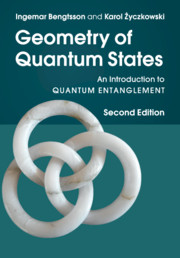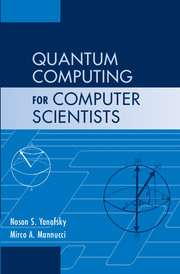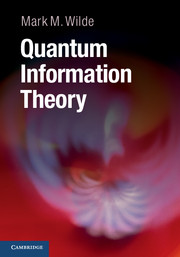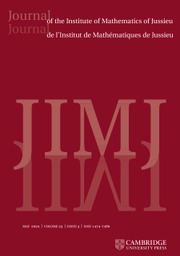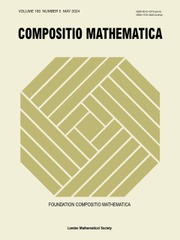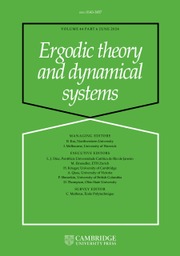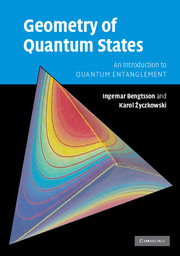Geometry of Quantum States
Quantum information theory is a branch of science at the frontier of physics, mathematics, and information science, and offers a variety of solutions that are impossible using classical theory. This book provides a detailed introduction to the key concepts used in processing quantum information and reveals that quantum mechanics is a generalisation of classical probability theory. The second edition contains new sections and entirely new chapters: the hot topic of multipartite entanglement; in-depth discussion of the discrete structures in finite dimensional Hilbert space, including unitary operator bases, mutually unbiased bases, symmetric informationally complete generalized measurements, discrete Wigner function, and unitary designs; the Gleason and Kochen–Specker theorems; the proof of the Lieb conjecture; the measure concentration phenomenon; and the Hastings' non-additivity theorem. This richly-illustrated book will be useful to a broad audience of graduates and researchers interested in quantum information theory. Exercises follow each chapter, with hints and answers supplied.
- A new edition, focusing on the geometry of quantum states
- Stresses the similarities and differences between classical and quantum theory
- Uses a non-technical style and numerous figures to make the book accessible to non-specialists in quantum information theory and mathematical literature
Reviews & endorsements
'True story: A few years ago my daughter took a break from her usual question, 'Dad, what is your favourite colour?' and asked instead, 'What is your favourite shape?' I was floored! 'What a wonderful question; my favourite shape is Hilbert space!' 'What does it look like?' she asked. My answer: 'I don't know! But every day when I go to work, that's what I think about.' What I was speaking of, of course, is the geometry of quantum-state space. It is as much a mystery today as it was those years ago, and maybe more so as we learn to focus on its most key and mysterious features. This book, the worn first-edition of which I've had on my shelf for 11 years, is the indispensable companion for anyone's journey into that exotic terrain. Beyond all else, I am thrilled about the inclusion of two new chapters in the new edition, one of which I believe goes to the very heart of the meaning of quantum theory.' Christopher A. Fuchs, University of Massachusetts, Boston
'The quantum world is full of surprises as is the mathematical theory that describes it. Bengtsson and Życzkowski prove to be expert guides to the deep mathematical structure that underpins quantum information science. Key concepts such as multipartite entanglement and quantum contextuality are discussed with extraordinary clarity. A particular feature of this new edition is the treatment of SIC generalised measurements and the curious bridge they make between quantum physics and number theory.' Gerard J. Milburn, University of Queensland
Praise for the first edition: 'Geometry of Quantum States can be considered an indispensable item on a bookshelf of everyone interest in quantum information theory and its mathematical background.' Miłosz Michalski, editor of Open Systems and Information Dynamics
Praise for the first edition: 'Bengtsson's and Zyczkowski's book is an artful presentation of the geometry that lies behind quantum theory … the authors collect, and artfully explain, many important results scattered throughout the literature on mathematical physics. The careful explication of statistical distinguishability metrics (Fubini-Study and Bures) is the best I have read.' Gerard Milburn, University of Queensland
Product details
No date availablePaperback
9781107656147
635 pages
245 × 170 × 32 mm
1.05kg
139 b/w illus. 22 tables
Table of Contents
- Preface
- 1. Convexity, colours, and statistics
- 2. Geometry of probability distributions
- 3. Much ado about spheres
- 4. Complex projective spaces
- 5. Outline of quantum mechanics
- 6. Coherent states and group actions
- 7. The stellar representation
- 8. The space of density matrices
- 9. Purification of mixed quantum states
- 10. Quantum operations
- 11. Duality: maps versus states
- 12. Discrete structures in Hilbert space
- 13. Density matrices and entropies
- 14. Distinguishability measures
- 15. Monotone metrics and measures
- 16. Quantum entanglement
- 17. Multipartite entanglement
- Appendix 1. Basic notions of differential geometry
- Appendix 2. Basic notions of group theory
- Appendix 3. Geometry – do it yourself
- Appendix 4. Hints and answers to the exercises
- Bibliography
- Index.

